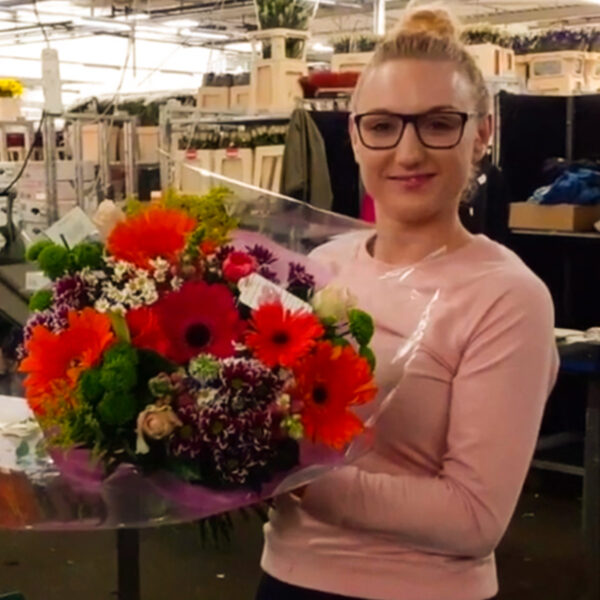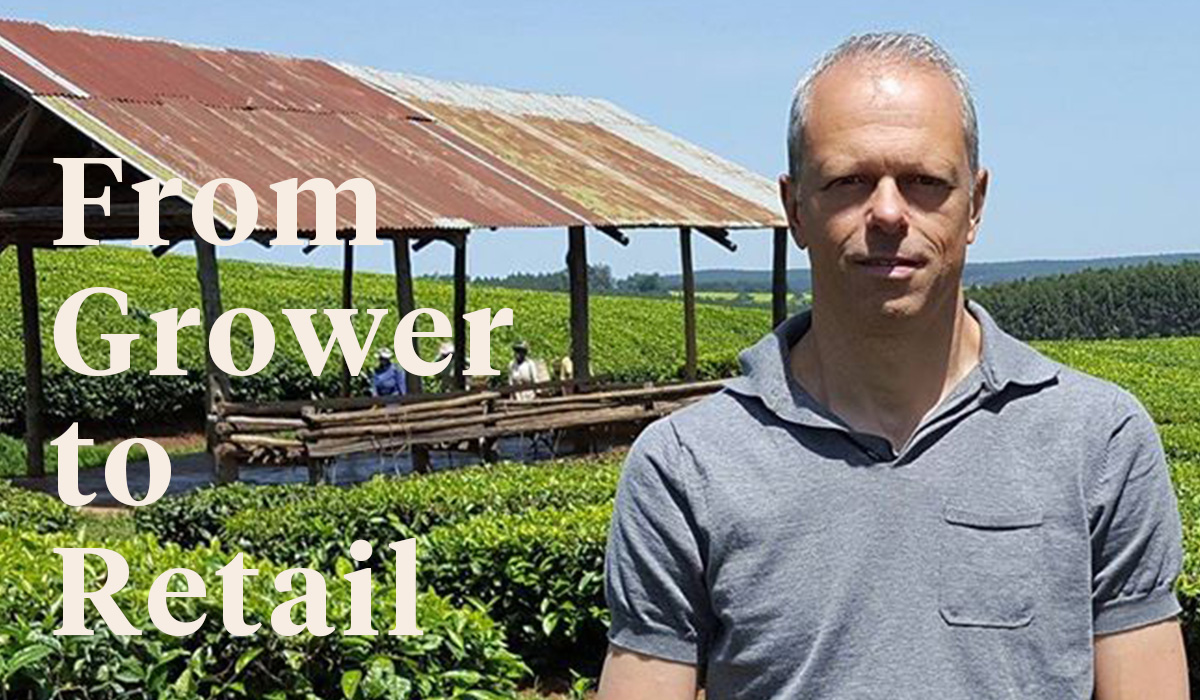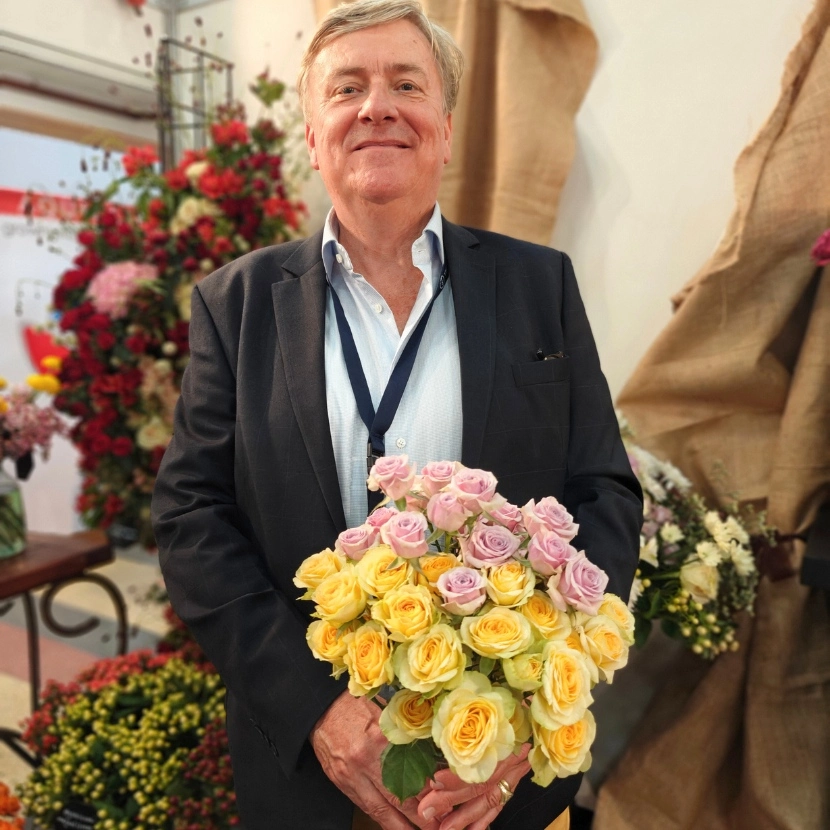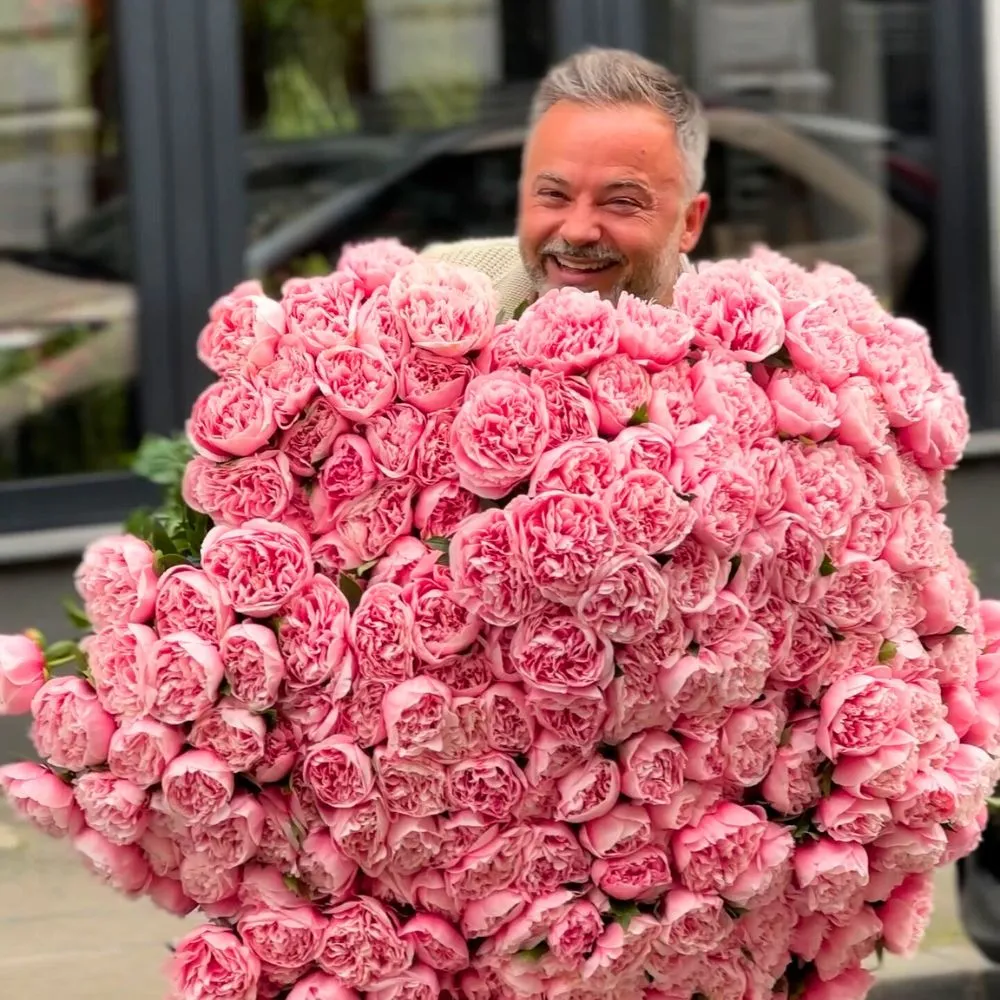Bloom is one of the top retail suppliers of the Netherlands. Being a member of the Dutch Flower Group family, they deliver sustainable quality flowers and mixed bouquets almost to the hands of consumers. Therefore, everyone at Bloom must possess great knowledge about grower specs on one side and consumer demands on the other. Bloom's Procurement Manager Robert de Boer speaks openly about the issue of ripe vs. raw, giving us an insight into the way of thinking of a supplier to the retail, a growing business in floriculture. 
What is generally for a wholesaler the ideal maturity stage for flowers that are not usually harvested in full bloom?
The correct maturity stage depends on the type of flower. For flowers that still have to open even further, it is ideal if they show good color in the store and the consumer can see what the ornamental value will be. With an alstroemeria or carnation, the stage may be quite far, but for example tulips and roses are quickly labeled by the consumer as old or ripe when they are already half-open. A vase with gladiolus or lilies is nice if it develops further at home, but when you buy these you want to see which color you get. Uniformity is also important. One or two roses from a bunch of ten that are too ripe or too raw can already ruin the bunch.

Are you satisfied with the maturity stages of flowers as you now receive them?
Yes, we make good agreements with our growers about this. And they roll that out to their employees who harvest and process the flowers. With large companies, this often involves a lot of people and if we have a different desire with regard to maturity, it requires quite a lot of attention from every employee.
Does Bloom buy on the (Dutch) auction clocks, directly from growers or both?
Bloom buys almost everything directly. The same applies to our sister company Green Partners, with which we are going to merge this year.

If you buy directly from a grower, is there a different maturity stage requirement for Dutch growers compared to growers from, for example, Africa or South America?
Actually hardly, if at all. But the transport of the flowers from Africa or South America sometimes requires a slightly different maturity stage. With open flowers, the risk of stains or transport damage is greater. From a commercial point of view, it is also interesting if they are not too open and more stems fit in a box. It is important, for example, to agree the correct stage of roses for each variety with the farm, as this can vary considerably. After transport, it is, of course, the intention that they are presented beautifully in the store and that they open well at home and that they stand as long as possible.

How much time is there between the arrival of your flowers and that they leave for the retailers? Has the maturity of the flower changed during that period?
Half an hour at the most…. No, just kidding. Preferably as short as possible, of course, but it also depends on the cooperation with the customer. If the orders we get are based on exact daily retail sales, you ensure that you have the supply to be able to deliver quickly. If you don't interrupt the cold chain, the ripeness of most flowers hardly changes.
What requirements do your customers, the large supermarkets, place on the maturity of your flowers?
They demand a fresh look for every bunch or bouquet to attract the consumer. The flowers should not open too quickly in the store but should develop further on the table and sometimes also achieve a certain minimum vase life. Our customers rightly require us to know the right stage for each flower for the best result.

Many growers believe that flowers are stronger if they are allowed to stay on the field longer; they would then have a longer shelf and vase life and bloom more beautifully. The result is that those flowers are delivered riper. Suppose the flowers were to be delivered one stage riper, what would be the consequences for Bloom? Do the flowers get more value or less?
A flower is stronger if it stays longer on the field, there is certainly some truth in this. Especially with products that require a lot of energy, such as a spray rose. Interplant Roses rightly draws attention to this. Usually, nothing comes out of a rose that is too raw or an almost green solidago. The flowers that we can always admire at the trade fairs in early November were undoubtedly not harvested too raw in the production areas worldwide. Everyone naturally wants to show their product as optimally as possible. But from the farm or nursery directly to the stand at the fair is not the daily chain that we all have to deal with. All flowers 1 stage riper as some growers request is not necessary. That would mean that we've been sleeping all this time. You can make good agreements about maturity and growers like to think along with this for a satisfied customer. It is good to keep monitoring and to know what the challenging period is for products. When it's raining in Africa, roses are sometimes harvested and transported a little rawer to give diseases less chance. This is understandable, as long as we keep in mind that they are still open enough for a good vase life. If the productions of carnations and spray carnations is low in the spring and autumn, you must communicate well with your suppliers to ensure that yours do not get too raw.

What do you want to say as a procurement manager to growers and retailers on this subject? Do you have any tips or ideas to achieve a better mutual understanding?
This article is about maturity, about ripe or raw, but there are of course many more aspects that ensure a satisfied consumer comes back for another bunch of flowers. The breeder is at the beginning of this. Of course, the yield per m² plays a major role in the choice of assortment for a grower. However, the best-performing roses in the vase are not always the varieties that give the best yield in cultivation. The lowest-performing have now been phased out, partly due to various 'blacklists'. But in my opinion, some varieties should have not been put on the market. Or perhaps they had been tested too short. A few years ago, for example, you had the rose Revue, which did nothing at all in the vase. Regardless of which greenhouse he came from, it was anti-advertising for the rose. I hope I don't insult someone now, because I notice that the vase performance is now an important aspect of new varieties. We are often asked for an opinion and it is nice to discuss it. The risk is always greater with a new species, but there are sometimes gems that are not or hardly planted. Bloom has had a 'number' (a novelty with a breeder that has no name yet) planted commercially. The variety went well and then you have something unique.The vase life also has to do with cultivation. How much do you give the flower and is it quietly grown or as quickly as possible? There will always have to be a balance in this and it is, especially at this time, completely logical and also necessary that you try to grow as efficiently as possible. What happens after the harvest? Hygiene, clean buckets, the cold chain, handling the flowers, transport. Obvious things, actually. We as suppliers of supermarkets also have our responsibility for the quality. In particular by designing the supply chain in such a way that the freshness of the products is guaranteed and there is a product in the store that is bought with pleasure. Attention to the shelf and the necessary care from the retailer is of course very welcome. But our job is to ensure that with the right design and good quality, every bouquet is bought quickly and the loss in the store is as low as possible. I think the best tip for mutual understanding is to keep coming together in all links of the chain. We like to take our customers to growers and vice versa, also abroad. A visit with the customer to growers, breeders, and the cargo handler at the airport in Africa opens eyes and also brings opportunities. A few years ago we stepped on a plane to Berlin with about 50 growers to visit shops and a customer depot. PVery educational and petty unique in our industry I think.

Additional Information About Cutting Stages
Flowers are harvested mainly according to the prescribed auction regulations. In general, Dutch auctions divide the offer at their sales platforms and at the clocks into 5 stages of maturity. These correspond with the cutting stages of growers. • 1 = flower is raw, closed • 2 = flower is slightly open • 3 = flower starts blooming • 4 = flower is clearly open, but not fully. • 5 = flower is fully open You can imagine that some flowers are harvested and sold at cutting stage 5, like anthurium, gerbera, and many spray chrysants. Other flowers need to be cut in a less mature stage, so they will bloom further from there.









